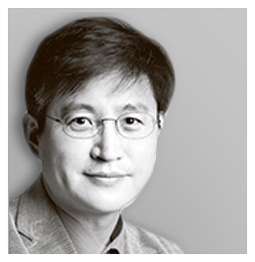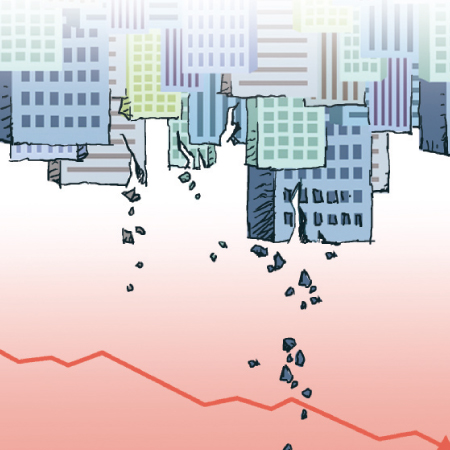Deeper into Japanification

The author is the chief editor of content production at the JoongAng Ilbo.
As the saying goes, people resemble their enemies when they badmouth them behind their backs. That is what’s happening to the Korean economy now. We’re spotting countless examples of “Japanification” in this country. Signs of the two lost decades from 1990s are everywhere in Korea today.
Let’s first take a look at prices. Consumer prices in Korea grew only 0.4 percent last year compared to the previous year — the lowest rate in the nation’s history — and even worse than the 0.8 percent in 1999, when Korea was being buffeted by the Asian financial crisis. For 12 consecutive months in 2019, inflation remained below 1 percent. The producer price was in negative territory for five straight months. The GDP deflator — a measure of price inflation — was negative for four consecutive quarters for the first time since the Korean government started compiling the statistic. Deflation does no good to an economy because when prices continue dropping, consumption and production also tumble.
Korea is also following in the footsteps of Japan in terms of the aging population. Korea has entered an era of population decline. Data showed that 25,648 babies were born last October, whereas 25,520 people died. The country’s population growth rate has withered to nearly zero percent. This year, the population will begin to shrink. The working population — of people aged between 15 and 64 — already started decreasing from 2017. Japan’s working population began to fall in 1995. For years, Korea has been following Japan’s demographics from 20 years behind, but that gap is getting narrower than ever due to Korea’s rapid population decline. Korea’s fertility rate in 2018 was 0.98 per fertile woman, but Japan’s was 1.4.
A third similarity between the two countries is how the reduction of work hours took a toll on their economies. When a company cuts back work hours without improving productivity, their production is prone to shrink. Some analysts believe that the Japanese government’s decision to reduce its 48-hour workweek to a 40-hour workweek in the late 1980s was the main cause of Japan’s long-term stagnation.

The interest rate policy is yet another thing Korea and Japan have in common — especially how both nations tried to keep the rates low to revive the economy, yet failed. Japan maintained a near-zero interest rate for nearly 20 years after the bubble burst, but still could not revive its economy. Korea’s current interest rate of 1.25 percent seems only steps away from reaching 1 percent, which would be the lowest ever. Korea can hardly make the excuse that a “high” interest rate is what has caused weak investments and consumption.
What about politics? Both countries’ politicians have been unable to solve their respective economic issues. Throughout Japan’s two-decade recession, non-performing loans were not handled fast enough, labor reforms barely made any progress, and a sound financial management system was nowhere to be seen. Korea’s situation is worse: politicians are holding back the economy, refusing to ease stifling regulations in the fourth industrial revolution, and pushing for legislation that even bans new van-hailing service Tada. With venture businessmen so fed up, some even pledged to create a political party aimed at removing layers of government regulations to speak for their interests in the National Assembly.
Koreans are worried about Japanification because they are well aware that the economy will not bounce back if it is stuck in a long-term recession. We witnessed Japan’s situation over the past decades, yet failed to learn lessons from it. While Japan’s growth rate sank, Koreans idly watched it without showing any determination to push reforms on the economic front.
In fact, Korea is not the only country struggling with Japanification. An aging society is also common among developed nations, and many countries are experiencing the so-called “three-lows” — low consumer prices, low growth and low interest rates. They are finding it difficult to lower their interest rates further as they printed so much money following the 2008 global financial crisis.
As Japanification has become a universal phenomenon in developed economies, they’re struggling to overcome the risks. But for Korea, there are limits to solving the problem through fiscal means. Unlike Japan, Korea is not a key currency country and is highly vulnerable to fluctuations of global trade.
Korea has no other option but to go back to the basics: to empower companies and individuals to regain their vigor. There are many pending issues to solve. Korea must embark on deregulation so as not to undermine entrepreneurial creativity, reform a labor market that only works to the advantage of labor unions, and make serious changes to the government’s relentless income-led growth policy, which is killing our economy. I worry that the Moon Jae-in administration will keep refusing to fix those fundamental problems and fall behind the global movement to fight Japanification.
JoongAng Ilbo, Jan. 21, Page 27










with the Korea JoongAng Daily
To write comments, please log in to one of the accounts.
Standards Board Policy (0/250자)